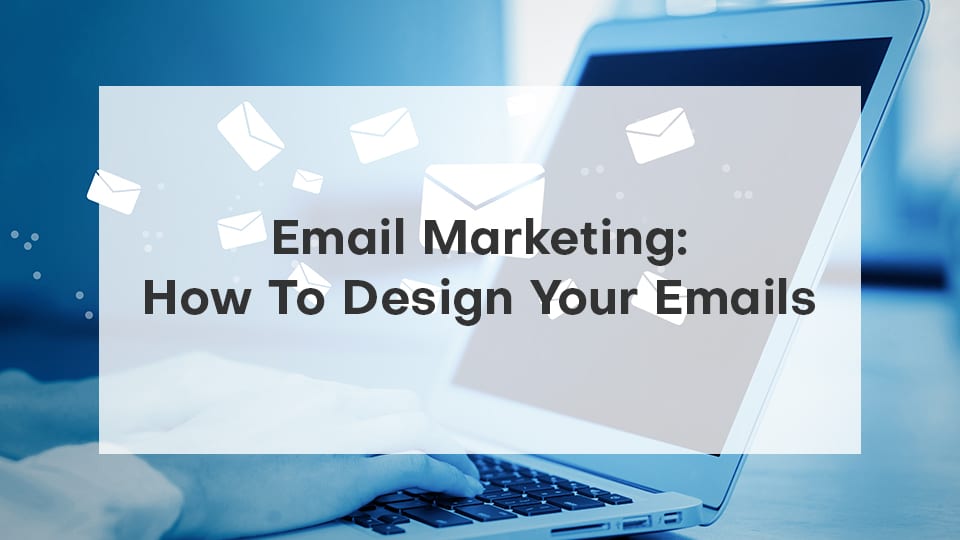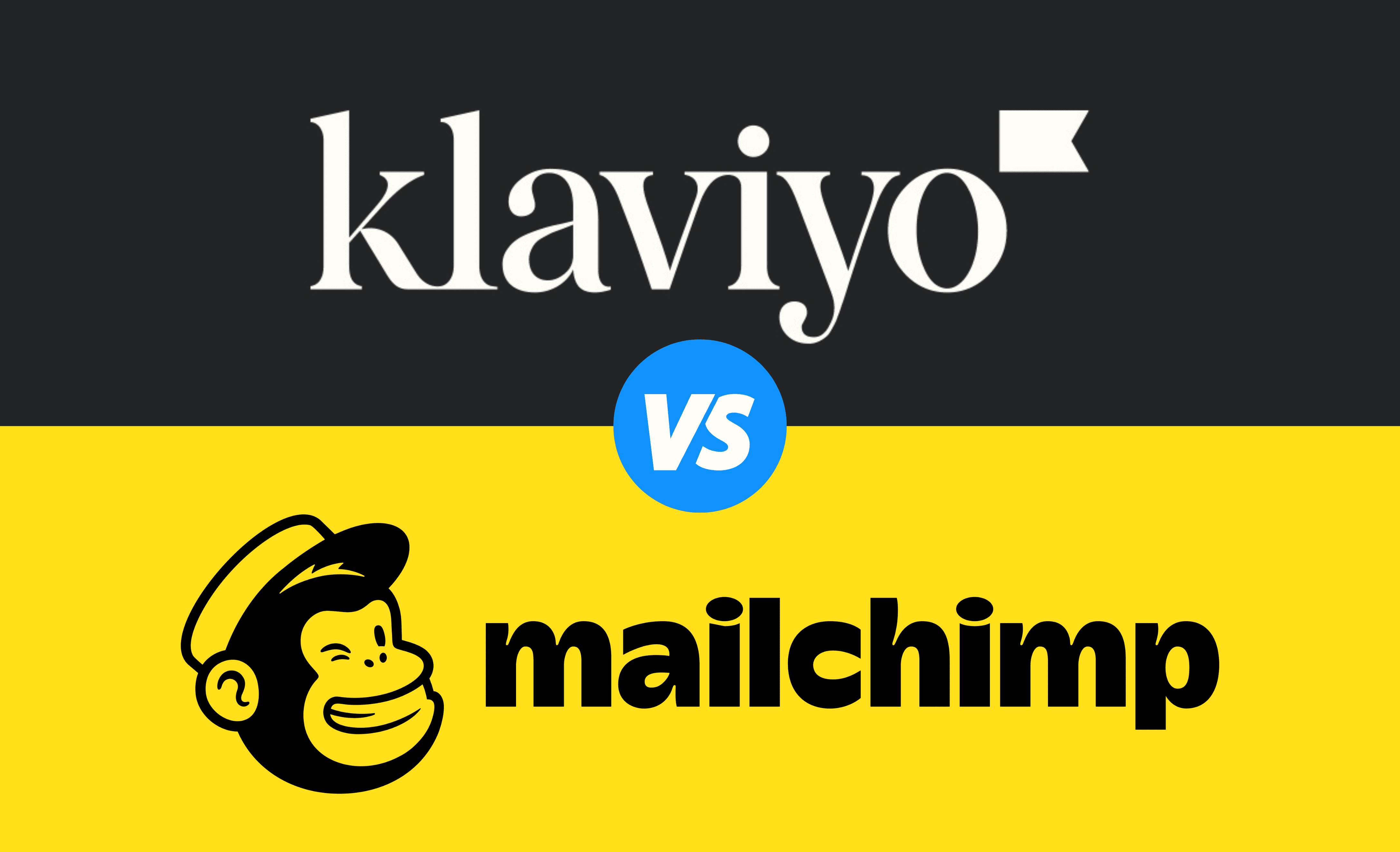In digital marketing, crafting and refining a potent inbound marketing funnel is a critical strategy for businesses aiming to attract, engage, and delight customers online. By nurturing leads through a well-structured funnel, companies can ensure their marketing efforts are highly targeted and efficient, leading to a better return on investment.
The inbound marketing funnel encompasses strategies to attract, engage, and delight customers. It fosters a trusting relationship through relevant content and personalized experiences, ultimately converting leads into loyal customers.
From leveraging advanced technological tools and systems for seamless automation and integration to meticulously analyzing and optimizing each funnel stage, the process requires a keen understanding of key performance indicators and adapting strategies based on empirical data.
This blog looks into the intricacies of developing a successful inbound marketing funnel, outlining essential tools, strategies for adaptation based on KPI analysis, and techniques for continual improvement to stay ahead in the competitive digital landscape.
Understanding the Inbound Marketing Funnel
Components of the Inbound Marketing Funnel
The inbound marketing funnel is a crucial concept in digital marketing, particularly in the age of information overload. It outlines how businesses can attract, nurture, and convert leads into customers using valuable content, social media engagement, and search engine optimization (SEO). Each component is critical in guiding potential customers through their buying journey, from initial awareness to purchasing.
- Content: The foundation of the funnel is high-quality content that provides value to your target audience. This can include blog posts, videos, e-books, webinars, and more. Creating relevant and useful content can attract potential customers and build trust with them over time.
- Social: Social media platforms are crucial for engaging with your audience, promoting your content, and building a community of loyal followers. Engaging with your audience on social media can drive traffic to your website and nurture leads through the sales funnel.
- Search: SEO is essential for ensuring that your content gets seen by potential customers. By optimizing your website and content for search engines, you can increase organic traffic and improve your chances of ranking higher in search engine results pages (SERPs).
From Awareness to Advocacy: The Journey Through the Funnel
The journey begins with creating awareness. At this stage, digital channels play a crucial role in attracting visitors. SEO strategies, social media posts, and insightful blog articles are employed to capture the target audience’s attention.
Moving deeper into the funnel, personalized content and effective email marketing nurture leads, transforming interested prospects into buyers.
The final and most critical phase focuses on delighting those customers, turning them into happy, vocal advocates for the brand. This transformation is facilitated by excellent customer service, personalized interactions, and continued engagement through digital marketing efforts.
Comparing Inbound and Outbound Marketing Funnel Strategies
In contrast to the inbound approach, outbound marketing interrupts potential customers with content they haven’t actively sought out. Traditional marketing methods, such as TV commercials and print ads, epitomize this strategy. While outbound tactics can generate visibility, they often lack the personalized engagement that inbound marketing excels at.
By focusing on building relationships at every funnel stage, inbound marketing fosters a deeper connection with the audience, making it a more effective strategy in today’s digital landscape.
Sections of The Funnel (ToFu, MoFu, BoFu)
Top of the Funnel (ToFu): Attracting Visitors
At the top of the funnel (ToFu), the focus is on attracting visitors. This stage leverages SEO, social media platforms, and engaging blog content to create awareness. The goal here is not just to generate traffic but to attract the right kind of traffic – your target audience.
By emphasizing relevant keywords and producing helpful content, brands can effectively draw in potential customers who are beginning their buyer’s journey.
Middle of the Funnel (MoFu): Nurture Leads
The middle of the funnel (MoFu) is where interested prospects are nurtured into leads. This is achieved through targeted marketing automation tools, personalized email campaigns, and valuable content designed to address the specific needs and questions of the audience.
At this stage, nurturing leads involves providing more detailed information and solutions, showcasing how your product or service can solve their problems. It’s about building trust and moving prospects closer to a buying decision.
Bottom of the Funnel (BoFu): Delighting Customers
Finally, at the bottom of the funnel (BoFu), the focus shifts to converting leads into customers and ensuring they are delighted with their purchase. This involves not just a seamless sales process but also post-purchase support and engagement.
Email marketing, customer testimonials, and personalized content play significant roles here. Delighting customers doesn’t end with a sale; it extends into creating advocates for your brand through exceptional service and ongoing engagement.
Stages of the Inbound Marketing Funnel
Overview of Each Stage (Attract, Convert, Close, Delight)
The inbound marketing funnel is a strategic framework that guides potential customers from first contact to loyal advocacy.
This journey is segmented into four critical stages: Attract, Convert, Close, and Delight. Each stage represents a unique phase in the buyer’s journey and requires specific strategies and content.
- Attract: This initial stage focuses on drawing in the right audience through valuable content and SEO tactics.
- Convert: Here; interested visitors are turned into leads via calls-to-action, landing pages, and marketing automation.
- Close: During this phase, leads are nurtured and converted into customers through targeted email campaigns and sales team efforts.
- Delight: The final stage aims to turn customers into brand advocates through exceptional service and ongoing engagement.
Key Activities in Each Stage
- Attract: Utilize SEO strategy, blog content, and social media posts.
- Convert: Implement lead magnets, such as free trials and ebooks, paired with effective landing pages.
- Close: Engage CRM and email marketing to nurture leads into sales.
- Delight: Offer exclusive content and support to ensure customer satisfaction.
Success Metrics for Each Stage
- Attract: Measure website traffic, social media engagement, and SEO ranking.
- Convert: Track conversion rates, lead quality, and newsletter sign-ups.
- Close: Focus on closing rates, sales cycle length, and customer acquisition cost.
- Delight: Monitor customer retention rates, net promoter scores, and upsell/cross-sell metrics.
Attracting Visitors: Creating Engaging Content
About 72% of companies say content marketing increases engagement and has led to more leads. This statistic highlights the importance of creating engaging content to attract visitors in the inbound marketing funnel.
Identifying Your Target Audience
Success begins with understanding who your target audience is. Conduct comprehensive target audience research to create detailed buyer personas. These personas should inform all content creation, ensuring relevance and engagement.
Types of Content That Attract Visitors
Various content types can attract visitors; matching these with your audience’s preferences is key. Blog posts, infographics, videos, and reports are effective tools for drawing attention. SEO plays a crucial role in making content discoverable via search engines.
Tips for Creating Content That Resonates
- Understand Pain Points: Address your audience’s challenges directly within your content.
- Use Relevant Keywords: Incorporate keywords strategically to improve search engine results page visibility.
- Provide Value: Offer actionable insights or solutions that genuinely help your audience.
- Be Consistent: Regularly publish content to engage your audience and attract new visitors.

Integrating Social Media into Your Inbound Marketing Strategy
Choosing the Right Social Media Platforms
Each social platform hosts a unique demographic and fosters different types of engagement. For instance, LinkedIn is invaluable for B2B inbound marketing strategies, facilitating professional networking and thought leadership.
Conversely, Instagram and TikTok are more suited to visually driven content, which is ideal for B2C brands aiming to engage younger audiences. Selecting the right platforms is crucial; it hinges on where your target audience spends their time and how they prefer to consume content.
Creating Engaging Social Media Content
Engagement is the currency of social media. To attract visitors effectively, brands must craft content that resonates with their audience. This involves promoting blog articles or services and sharing behind-the-scenes looks, customer testimonials, and interactive elements like polls or Q&A sessions.
The goal is to foster a community around your brand, turning interested prospects into loyal followers. Personalized content that addresses your audience’s specific pain points or interests can significantly enhance engagement rates.
Measuring Social Media Success
To validate the effectiveness of social media efforts, brands need to focus on metrics beyond mere follower count. Engagement, click-through, and conversion rates offer deeper insights into how well your content performs.
Tools and dashboards provided by marketing automation platforms can streamline this analysis, allowing marketing teams to adjust real-time strategies for optimal performance. Success in social media is not just about visibility; it’s about fostering meaningful interactions that propel potential customers further down the inbound marketing funnel.
Utilizing SEO to Enhance Visibility
Keyword Research and Selection
At the heart of search engine optimization (SEO) lies keyword research. It is crucial to identify relevant keywords that your target audience uses during their buying process. Tools like Google’s Keyword Planner and SEMrush offer insights into search volumes and competition levels, enabling brands to select keywords that are not too broad yet have a substantial search volume.
This strategic selection ensures that your valuable content reaches those actively seeking solutions.
On-Page SEO Techniques
On-page SEO involves optimizing individual web pages to rank higher in search engines and earn more relevant traffic. This includes naturally incorporating selected keywords into titles, headings, meta descriptions, and content.
Moreover, enhancing site speed, ensuring mobile-friendliness, and improving user experience is pivotal. These factors contribute to higher search engine results page (SERP) rankings and a better user experience, encouraging visitors to stay longer and engage more deeply with your content.
Off-Page SEO Strategies
While on-page SEO focuses on your website’s content, off-page SEO examines how your site is perceived elsewhere on the web.
Link signals (inbound anchor text, linking domain authority, etc.) account for 27.94% of ranking factors, underscoring the importance of a robust off-page SEO strategy. Thus, building backlinks from reputable sites within your industry can significantly boost your site’s authority and visibility in search engine results.
Additionally, social media engagement and local SEO practices, like managing your Google My Business listing, significantly enhance your online presence.
By integrating social media into your inbound marketing strategy and employing comprehensive SEO practices, brands can significantly amplify their visibility and attract more qualified leads into their sales funnel.
Converting Visitors into Leads: Effective Lead Generation
Designing Effective Calls-to-Action
In the digital marketing landscape, calls-to-action (CTAs) are the critical link between attracting visitors and converting them into leads. An effective CTA goes beyond mere aesthetics; it should be compelling and communicate the value proposition to the visitor.
According to HubSpot, personalized CTAs convert 202% better than default versions, underscoring the importance of tailoring messages to different stages of the inbound marketing funnel and segments of your target audience. For instance, instead of a generic “Click Here,” a more persuasive CTA might say, “Download Your Free Guide to Doubling Your Traffic.”
Creating Persuasive Landing Pages
Landing pages are the workhorses of lead generation. They are designed with a single focus: to convert visitors into leads by presenting them with valuable content or offers in exchange for their contact information.
An effective landing page aligns closely with the intent behind the visitor’s search query and the CTA that brought them there. It provides clear, concise information about the offer, minimizes distractions, and makes the form submission process seamless. Incorporating testimonials or trust badges can significantly enhance credibility and conversion rates.
Utilizing Forms for Lead Capture
Forms play a crucial role in lead generation. Crafting effective forms involves a delicate balance between capturing enough information to qualify leads and avoiding overwhelming users with excessive fields.
Research by Marketo found that trimming form fields from nine to five can boost conversion rates by 34%. Thus, brands should focus on asking for essential information and integrating progressive profiling techniques to gather more data over time.

Nurturing Leads: Building Relationships through Email Marketing
Segmentation and Personalization Strategies
Email marketing thrives on relevance. Segmentation and personalization are key strategies to ensure your messages resonate with recipients. By segmenting your email list based on demographics, behavior, or sales funnel position, you can customize content to meet their specific needs and interests.
Automation and Drip Campaigns
Automation allows brands to send targeted, personalized emails at scale and nurture leads through the sales funnel. By setting up drip campaigns based on triggers like form submissions or website interactions, brands can deliver timely, relevant messages that guide leads toward conversion. This helps build credibility, trust, and brand loyalty over time.
Designing Effective Email Campaigns
The cornerstone of nurturing leads through email marketing is crafting campaigns that engage and provide value at every touchpoint. Effective email campaigns are characterized by clear, compelling subject lines, concise and relevant content, and visually appealing design that aligns with your brand’s identity.
Including clear CTAs that guide recipients toward the next step—whether it’s reading a blog post, signing up for a webinar, or taking advantage of a special offer—is crucial. Each email should be seen as an opportunity to educate, inform, or entertain, strengthening the relationship with the lead.
Measuring Email Marketing Success
Evaluating the performance of email marketing efforts is essential for understanding what resonates with your audience and where there’s room for improvement. Key monitoring metrics include open, click-through, conversion, and unsubscribe rates.
Mailchimp says the average open rate for all industries is 21.33%. Improving this percentage through effective segmentation, personalization, and compelling content can lead to a higher ROI for email marketing efforts. By continuously analyzing data and adjusting as needed, brands can optimize their email marketing strategy and effectively nurture leads.

Closing: Turning Leads into Customers
Sales and Marketing Alignment Strategies
The alignment between sales and marketing teams is pivotal in transforming leads into customers within the inbound marketing funnel. A cohesive strategy where both teams work towards a unified goal can significantly boost the effectiveness of converting leads.
Proper communication, data sharing, and defining lead criteria can improve the lead handoff process from marketing to sales. This ensures that leads are properly nurtured and guided throughout the buyer’s journey.
Effective Closing Techniques
Closing techniques have evolved beyond traditional sales pitches to embrace inbound marketing principles. Today, effective closing involves educating the lead, addressing their pain points, and offering solutions that align with their needs and journey stage.
Techniques such as consultative selling, where sales reps act more as advisors than salespeople, have proven to be effective. This approach is grounded in understanding the lead’s business challenges and goals, making the proposed solution feel personalized and highly relevant.
Utilizing CRM Systems for Closing Leads
Customer Relationship Management (CRM) systems play a crucial role in streamlining the process of turning leads into customers. These platforms organize lead information and provide valuable insights into each lead’s journey and interactions with the brand.
By leveraging data from CRM systems, sales teams can tailor their communication and follow-ups to match the lead’s preferences and readiness to buy. Moreover, integrating CRM systems with a marketing automation platform ensures a seamless flow of information between sales and marketing, enabling more targeted and timely interventions that can drive conversions.

Delighting Customers: Providing Exceptional Post-Purchase Experience
After-Sale Support Strategies
Post-purchase experience is as critical as the efforts that lead to the conversion. Effective after-sale support strategies ensure customers feel valued and supported, fostering long-term loyalty. This includes providing comprehensive onboarding materials, accessible customer service, and proactive check-ins to address potential issues.
Encouraging Customer Feedback and Reviews
Feedback and reviews are invaluable for continuous improvement and for building trust with prospective customers. Encouraging customers to share their experiences provides insights into areas for enhancement and generates social proof that can influence future buyers.
Techniques to gather feedback include automated post-purchase emails, customer satisfaction surveys, and incentives for leaving reviews. This ongoing dialogue keeps customers engaged and reaffirms their decision to do business with your brand.
Personalizing the Post-Purchase Experience
To truly delight customers, personalization should extend beyond the initial lead nurturing stages into post-purchase interactions. This can include personalized follow-up emails, exclusive offers based on previous purchases or interests, and tailored customer service experiences.
By treating each customer as an individual rather than a generic lead, you can deepen the relationship and foster long-term loyalty. Utilizing data from CRM systems and marketing automation platforms can aid in creating these personalized experiences, making customers feel valued and appreciated.

Measuring Success: Key Performance Indicators (KPIs) for Inbound Marketing
Defining and Tracking KPIs
In the realm of inbound marketing, defining and tracking the right Key Performance Indicators (KPIs) is crucial for assessing the effectiveness of your inbound strategy. These metrics provide tangible data on how well your inbound marketing funnel works, from generating leads to converting them into happy customers.
Essential KPIs include website traffic, lead conversion rates, customer acquisition cost (CAC), customer lifetime value (CLV), and the sales closing rate. By closely monitoring these indicators, sales and marketing teams can gain insights into the health of their own inbound marketing funnel and identify areas for optimization.
Using Analytics to Measure Inbound Marketing Success
Analytics play a pivotal role in measuring inbound marketing success. Marketing automation platforms offer comprehensive analytics features that allow teams to track the performance of inbound marketing channels and campaigns in real-time.
By analyzing visitor behavior, engagement patterns, and conversion paths, inbound marketers can understand not all visitors will convert but can identify which strategies are most effective at lead nurturing and generating leads. This analysis enables marketers to refine their inbound marketing funnels, ensuring they are aligned with the target audience’s needs and preferences.
Adapting Strategies Based on KPI Analysis
The dynamic nature of digital marketing necessitates continuous adaptation and refinement of inbound strategies. KPI analysis provides valuable feedback that informs strategic decisions. For instance, if the data indicates a low conversion rate at specific inbound marketing funnel stages, marketers might adjust their marketing message or employ different inbound marketing channels to improve performance.
Similarly, a high CAC might prompt a review of lead generation tactics or sales processes. By being responsive to KPI analysis, businesses can ensure their inbound marketing efforts remain effective and efficient, maximizing the return on investment.
Leveraging Technology and Tools in Inbound Marketing
Essential Tools for Inbound Marketers
Leveraging the right technology and tools is essential to executing an effective inbound marketing funnel. Key tools include Customer Relationship Management (CRM) systems, marketing automation platforms, SEO tools, and content management systems (CMS).
CRM systems facilitate the management of existing customers and leads, enabling personalized communication and improved customer service. Marketing automation platforms automate repetitive tasks such as email marketing and social media posting, allowing for more efficient lead nurturing and customer engagement.
Automating Inbound Marketing Processes
Automation is a cornerstone of an effective inbound marketing strategy. It streamlines operations and ensures consistent and timely interactions with prospects and customers.
Automating inbound marketing processes, such as lead scoring, email campaigns, and social media management, enables sales reps and marketing teams to focus on more strategic tasks. This approach increases productivity and enhances the ability to generate leads and move them through the inbound marketing funnel stages more effectively.
Integrating Systems for Efficiency
Integrating various systems and tools is vital for inbound marketing to deliver maximum benefits. This integration ensures seamless data flow between marketing automation platforms, CRM systems, and other tools used by sales and marketing teams.
Such synergy allows for a unified view of the customer journey, making tailoring marketing messages and sales strategies easier. Moreover, integration facilitates more accurate tracking and measurement of marketing efforts across different channels, providing a comprehensive understanding of what makes inbound marketing successful.

Analyzing and Optimizing the Inbound Marketing Funnel
Techniques for Funnel Analysis
In the quest to refine the effectiveness of an inbound marketing funnel, funnel analysis emerges as a pivotal technique. This analytical process involves examining each stage of the funnel to identify potential drop-off points or bottlenecks that hinder conversion rates.
By leveraging data from marketing automation platforms, sales and marketing teams can gain insights into how well the inbound marketing funnel works, pinpointing stages where prospects disengage. For instance, if a significant number of visitors leave at the lead capture stage, this could indicate issues with the clarity or value proposition of the offered content.
A/B Testing for Funnel Optimization
A/B testing is crucial in optimizing the inbound marketing sales funnel by allowing teams to compare two versions of a webpage, email, or landing page to see which performs better. This methodical approach facilitates data-driven decisions, ensuring that changes to the inbound strategy are based on empirical evidence rather than assumptions.
A sales rep can test various elements, such as CTA buttons, marketing messages, or email subject lines, to refine their approach and enhance the efficacy of lead nurturing efforts, ultimately generating more leads.
Continual Improvement Processes
The landscape of digital marketing is constantly changing, necessitating a mindset of continual improvement. By regularly reviewing and updating the inbound marketing funnel stages, businesses can stay ahead of evolving consumer behaviors and preferences.
This involves analyzing performance data and staying informed about trends in inbound marketing channels and techniques. Establishing a cycle of testing, learning, and refining ensures that inbound strategies remain relevant and effective, fostering a pipeline of happy customers and maximizing inbound marketing benefits.
Conclusion: Maximizing Results with the Inbound Marketing Funnel
In the dynamic world of digital marketing, the inbound marketing funnel stands out as a robust framework for attracting, engaging, and delighting customers. Businesses can effectively guide prospects through each funnel stage by understanding and implementing key inbound marketing strategies—from creating compelling content to leveraging technology for automation. Looking ahead, the future of inbound marketing promises further integration of AI and machine learning, enhancing personalization and efficiency.
For sustained success, businesses should focus on aligning sales and marketing teams, continuously analyzing and optimizing their funnels, and remaining adaptable to changes in consumer behavior and digital trends. Embracing these best practices will enable organizations to achieve and exceed their marketing objectives, securing a competitive edge in an ever-evolving marketplace.







